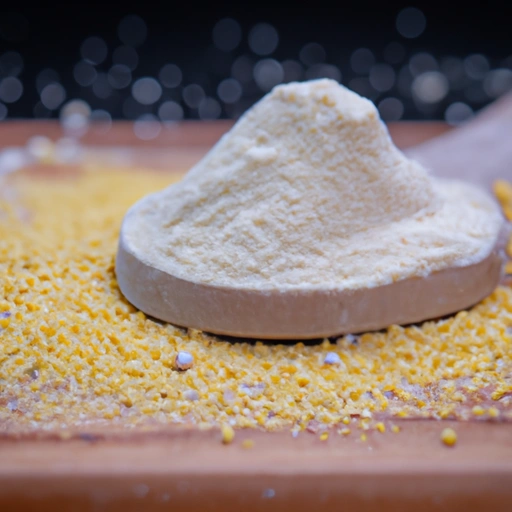Millet Flour
Description

Millet flour is a nutritious, gluten-free flour made from ground millet grains. It is a versatile ingredient known for its mild, slightly nutty flavor and is commonly used as an alternative to wheat flour in a variety of recipes. Millet flour is easily digestible and adds a light, delicate texture to baked goods. It can be used in both sweet and savory dishes and is embraced by cooks and bakers around the globe for its wholesome goodness.
Common uses
Millet flour is commonly used as a flour substitute in gluten-free baking. It is also a popular choice for thickening soups and sauces, making batters for deep-frying, and preparing traditional flatbreads and porridges. Its versatility makes it a valuable ingredient in numerous culinary applications.
Nutritional value
Calories
A 1/4 cup (30g) serving of millet flour typically contains approximately 120 calories.
Protein
Each serving of millet flour contains around 3 grams of protein, contributing to muscle growth and repair.
Fat
Millet flour is low in fat, with a serving containing about 1 gram, predominantly of the unsaturated variety.
Carbohydrates
Millet flour is a good source of carbohydrates, providing about 22 grams per serving, which is essential for energy.
Vitamins
It contains B-vitamins, particularly niacin (vitamin B3) and folate (vitamin B9), supporting energy metabolism and cellular function.
Minerals
Millet flour is rich in minerals such as magnesium, phosphorus, and zinc, which are crucial for bone health, energy production, and immune function.
Health benefits
Regular consumption of millet flour can contribute to digestive health due to its high fiber content. It also supports heart health with its magnesium content and can aid in blood sugar control because of its low glycemic index. Its nutrient composition also supports healthy skin and hair.
Potential risks
While millet flour is generally considered safe for most people, excessive consumption may lead to adverse effects in certain individuals, such as hypothyroidism, due to its goitrogenic properties. As with any food, it is best consumed in moderation.
Common recipes
Millet flour is a key ingredient in recipes like gluten-free bread, muffins, pancakes, and cookies. It is also used to prepare traditional dishes like Indian roti, African injera, and European-style porridges.
Cooking methods
When cooking with millet flour, it can be used alone or mixed with other flours to achieve the desired texture and flavor. It works well in baking at standard oven temperatures, typically between 350°F (175°C) and 375°F (190°C).
Pairing with other ingredients
Millet flour pairs well with other gluten-free flours such as rice and almond flour. It also complements dairy products, nuts, fruits, and spices, enhancing flavors in both sweet and savory recipes.
Summary
Millet flour is a nutritious, gluten-free alternative to wheat flour with a rich history and versatile use in cooking and baking. It offers a bounty of health benefits, and its usage spans across various cuisines and cultures. With its growing popularity, millet flour is becoming increasingly accessible to people seeking healthier and more inclusive dietary options.